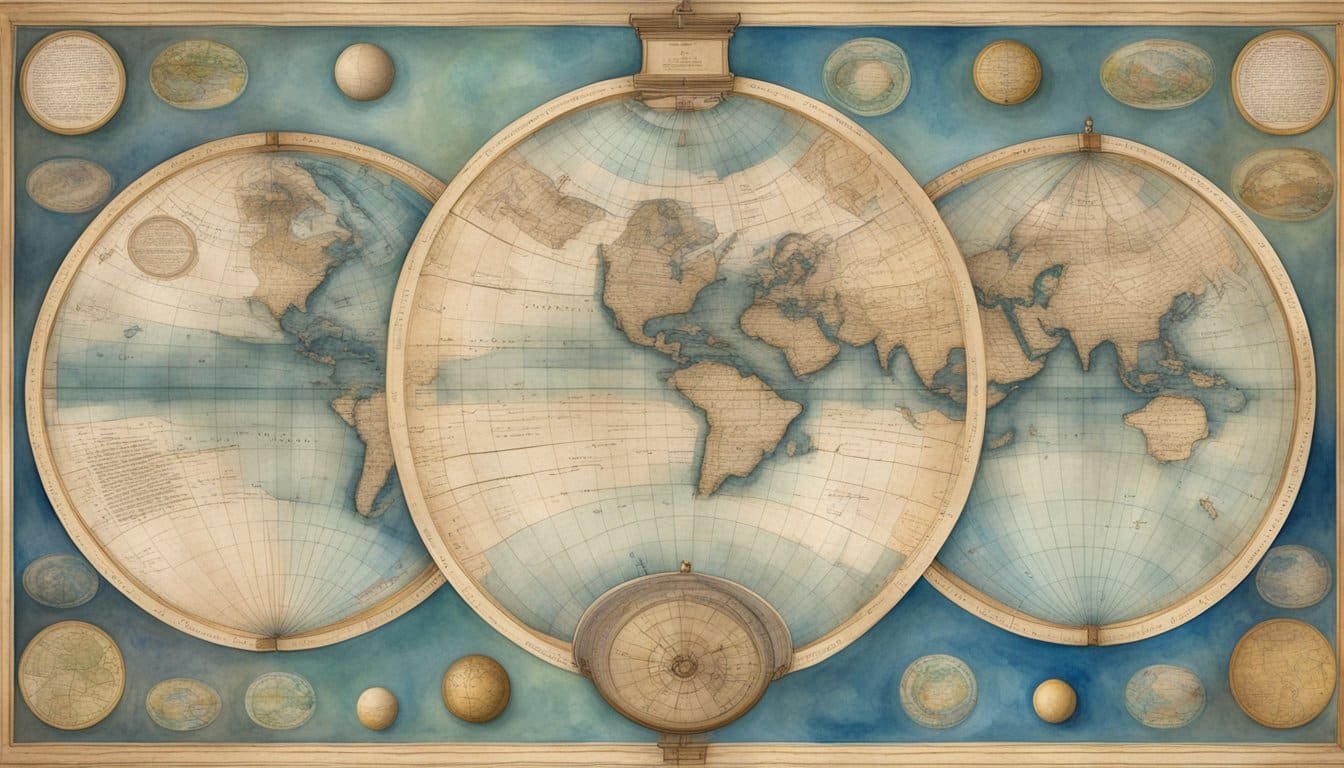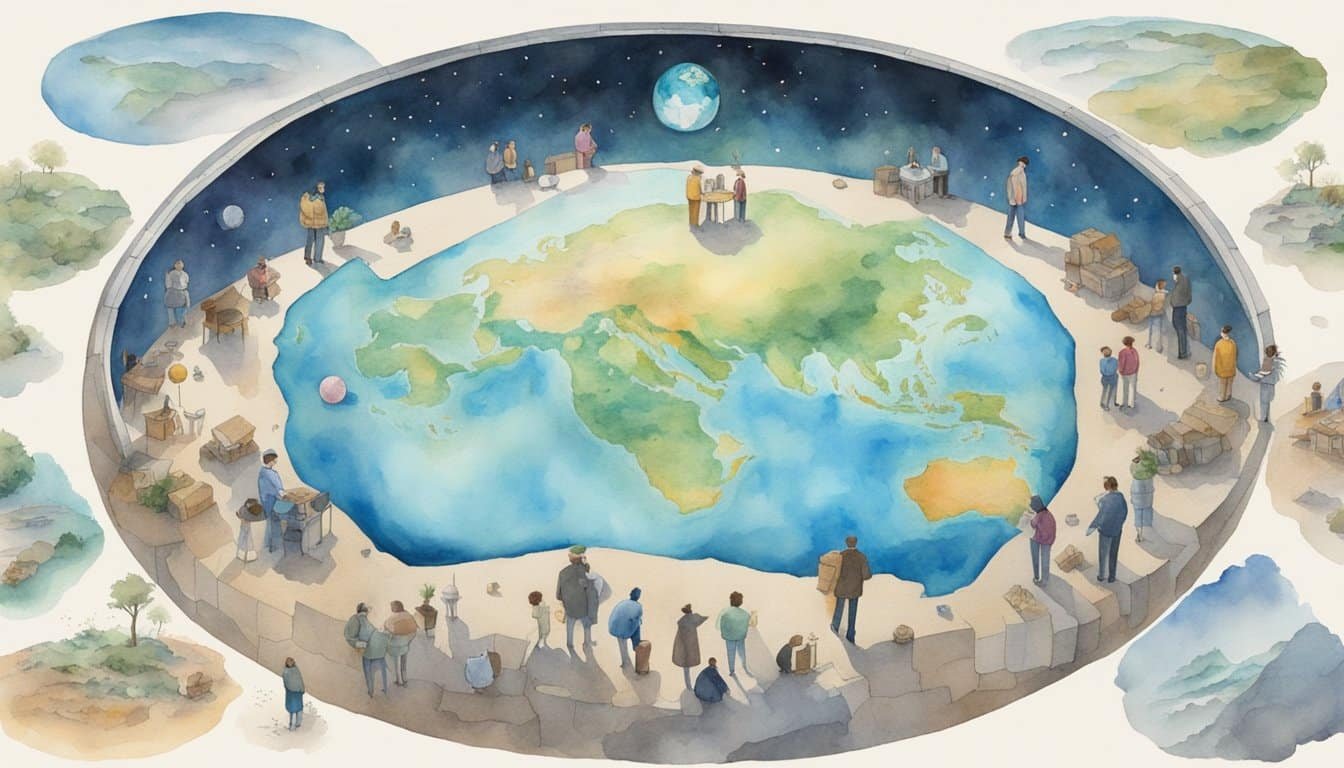Historical Perspectives on Earth’s Shape

The shape of our planet has been a subject of curiosity throughout history. Different cultures and scientists have had their own views on whether the Earth is flat or spherical. Let’s explore how perspectives on Earth’s shape have evolved over time.
Ancient Greek Discoveries
The ancient Greeks were among the first to propose that the Earth was round. Aristotle, an influential Greek philosopher, provided evidence for the Earth’s spherical shape as early as the 4th century BCE. He observed that during lunar eclipses, the Earth cast a round shadow on the moon. Furthermore, Eratosthenes, a Greek geophysicist and mathematician, estimated Earth’s circumference with remarkable accuracy by measuring the angles of the Sun’s rays at different locations.
Christopher Columbus and the Spherical Earth
Contrary to popular belief, Christopher Columbus and his contemporaries already knew that the Earth was not flat but spherical. Columbus embarked on his voyages across the Atlantic with the hope of finding a new route to Asia, fully expecting to reach land by sailing westward around the globe. His plans relied on the spherical nature of the Earth, an idea supported by scholars of his time.
Washington Irving’s Misconceptions
The myth that Columbus discovered the Earth was round can be attributed to the works of American author Washington Irving. In his book “The Life and Voyages of Christopher Columbus,” published in the 1820s, Irving dramatized the story and falsely depicted Columbus defending a round Earth against flat-Earth believers. This narrative, while compelling, was largely fictional and contributed to widespread misconceptions about the history of geography.
Scientific Understanding and Space Exploration
Unraveling the shape of Earth has been a journey of astronomical measurements and technological achievements, leading humanity to a comprehensive understanding through space exploration.
Astronomical Observations
From ancient times, people have looked at the night sky noting patterns of stars and planetary movements. The sun and moon follow predictable paths, hinting at the underlying structure of the solar system. For instance, during a lunar eclipse, Earth casts a round shadow on the moon, implying Earth’s spherical nature.
- Historic Records: Records from astronomers such as Ptolemy and Copernicus document celestial movements that align with a spherical Earth.
Gravity and Physics
Gravity, a fundamental force, pulls objects toward each other, naturally forming celestial bodies into spheres. On Earth, gravity’s effects are observed uniformly around the planet which wouldn’t occur if Earth were flat.
- Experiments: Dropping objects from different locations shows consistent gravitational pull.
- Physics Principles: Physics theories by scientists like Newton and Einstein provide frameworks that describe gravity accurately for a round Earth.
Space Missions and Satellite Imagery
NASA and other space agencies have conducted missions that give definitive proof of Earth’s shape. Photos from space missions clearly show a curved horizon. Satellites in orbit also provide imagery and data that are only consistent with a spherical Earth.
- Space Missions: Apollo, Space Shuttle, and International Space Station missions have documented the Earth’s curvature from various angles.
- Satellite Data: Thousands of satellites, including those for GPS technology, require a spherical Earth model to operate correctly.
Images from crafts orbiting Mars and beyond further corroborate the dimensions and form of planets in the solar system, including Earth. No agency, including NASA, has provided evidence to support the claim that Earth is flat and non-rotating; all data and observations affirm its round shape.
Flat Earth Beliefs and Counterarguments

The discussion around the shape of our planet has resurfaced in modern times, accompanied by a variety of beliefs championed by the Flat Earth community and various counterarguments from the scientific world.
Modern Flat Earth Advocacy
The Flat Earth theory has gained exposure in recent years, largely through social media platforms like YouTube and Facebook. Advocates, often referred to as flat-earthers, propose that the Earth is flat rather than a spherical object. These individuals sometimes organize through online forums and communities, sharing content that ranges from claiming oceans lying flat to sightings of city skylines such as Chicago from distances that, they argue, wouldn’t be possible if the Earth were round.
Challenging the Consensus
Flat-earthers often challenge the well-established scientific consensus that the Earth is a globe. They tend to be skeptical of photographic evidence from space and measurements by scientists. In some cases, their arguments draw from an interpretation of the Bible that supports a flat Earth. However, notable instances like viewing the skylines of Los Angeles and New York across vast distances have been debunked by explaining the phenomena through atmospheric refraction and curvature of the Earth.
Science Education and Responses
Science education institutions and advocates like Michael Marshall actively respond to flat Earth claims, promoting critical thinking and understanding of scientific methods. They aim to address misconceptions and provide clarifications. For instance, when discussing why all oceans do not spill over the edge of a flat Earth, they explain gravity and its effect on a spherical planet. These educational responses are critical in providing scientifically accurate explanations that counter the flat Earth theory.
Cultural Impact and Social Media

The flat earth belief has proliferated with the aid of social media, where groups and pages have provided platforms for sharing this controversial view and engaging in discussions around the cosmos and the Earth’s shape.
Role of Internet and Social Networks
The internet and social networks have played a pivotal role in the resurgence and spread of flat earth beliefs. Networks such as YouTube and Facebook have given this conspiracy theory new life, enabling proponents to bypass traditional gatekeepers of knowledge and directly reach a global audience. These platforms host a multitude of content, from the Flat Earth Society‘s discussions to DIY experiments aiming to disprove the curvature of the Earth.
Influence on Public Perception
Social media doesn’t just connect people; it can alter perceptions. A simple YouTube search can lead to countless videos proposing flat earth theories, suggesting a wide endorsement of these ideas. These platforms have inadvertently given a voice to pseudoscience, complicating the public’s understanding of the cosmos and its true nature. The flat earth beliefs have thus moved from the fringes into a more mainstream view for some, changing how they perceive the Earth’s shape.
Supporting Critical Thinking
However, not all is grim in the social media landscape. These networks also provide an opportunity for critical engagement with flat earth and other conspiracy theories. Educational content that debunks pseudoscientific claims by explaining the infinite plane of the cosmos can support critical thinking skills. While flat earth theories may spread misinformation, the ensuing debates can also prompt a deeper exploration of scientific truths.
Geographic and Physical Evidence

When exploring if the Earth is flat, one can look at a range of geographic and physical evidence that demonstrates its shape. From the curve of the horizon to the way continents and oceans arrange themselves on a globe, and the very experience of travel, these elements provide a solid understanding of the Earth’s form.
Horizon and Observations
The horizon offers a straightforward clue about the Earth’s shape. As ships sail away, they appear to sink, hull first, with the mast disappearing last—a phenomenon not possible if the Earth were flat. Additionally, observers at different latitudes see a unique set of constellations in the night sky, implying a curved surface that allows for varying perspectives.
Comparing Continents and Oceans
Mapping continents and oceans onto a flat surface distorts their shapes and sizes, a problem circumvented with a globe representation. For example, a map might exaggerate the size of the Arctic while shrinking Antarctica, yet on a globe, their proportions relative to the entire Earth are accurate. This affirms the Earth’s spherical nature, as continents and oceans maintain consistent scales only on a three-dimensional mass like a globe.
Travel and Earth’s Circumference
Travel provides tangible evidence of the Earth’s circumference. Circumnavigation, the act of traveling all the way around the Earth, has been accomplished by routes crossing various equatorial and polar paths. Such journeys reinforce the concept of a globe, where one can travel in a continuous direction and eventually return to the starting point. Furthermore, the consistent measurement of Earth’s circumference, about 40,075 kilometers, validates the Earth as a solid, spherical body.

